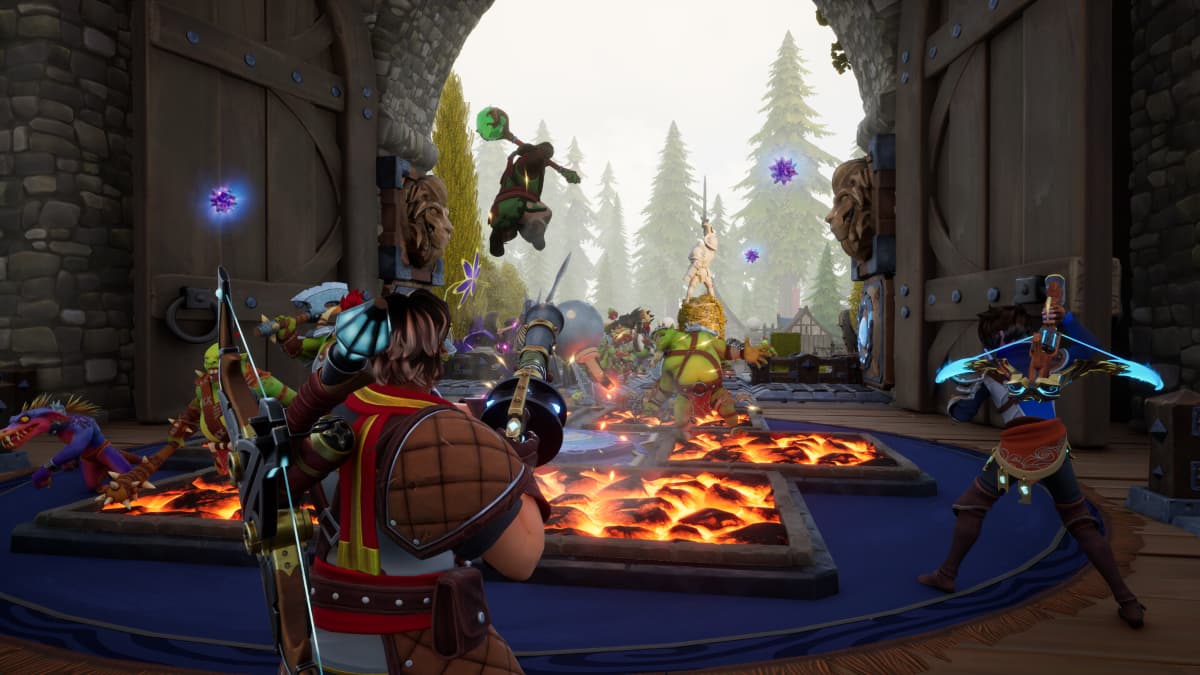After months of speculation and hype, the $250,000 Archon Team League Championships (ATLC) is set to begin tomorrow.
In Hearthstone, there’s no official, developer-backed central competition outside of Blizzard’s annual World Championships. That makes the competitive scene disparate and hard to follow. Tournaments come in all shapes and sizes, run by all different kinds of organizations—tech manufacturers, betting companies, game key resellers, and in this case esports teams themselves. The Archon league is arguably the biggest tournament outside of the World Championships. And it’s complicated: Eight, three-man teams will compete over seven weeks for seeding in the playoff stages in a unique three-on-three, best-of-11 format.
It’s a lot to take in. We’ve got you covered.
Who’s behind it?
Archon was founded by one of Hearthstone’s biggest streamers, Jason “Amaz” Chan. It came together in November last year, bringing on James “Firebat” Kostesich right before he won the first World Championships. That immediately put Archon in the discussion of top teams in the game. That status was solidified with the team signing more of the world’s best, including Jon “Orange” Westberg and Sebastian “Xixo” Bentert.
Given Amaz’s popularity on Twitch, the league—produced in conjunction with WellPlayed—will broadcast on his channel. Archon is both the organizer and broadcaster, but its players will also be competing in the league—a relationship that could present some tricky conflict-of-interest problems down the line.
What is the format?
Rather than the best-of-five or best-of-seven, one-on-one matchup common in most Hearthstone competitions, the ATLC is all about the teams. The matches are three-on-three, with each team having six decks from six different classes. Each player plays two of the decks. Following Blizzcon’s conquest format, which has become largely standard in the scene, the first team to win with all six decks is the victor. Effectively, it’s a best of 11—but don’t worry, there are only two matches per day.
There are also some fairly complicated rules: Players, for instance, get locked out when they lose with both decks, and they can be brought back by a teammate who’s won with both decks.
After the seven weeks of regular season, the top two teams qualify for the finals while the eighth-place team is eliminated. The third, fourth and fifth-place teams will have a playoff, joined by the winner of a match between the sixth and seventh-place team, with two more teams advancing to the finals. This format means that teams will likely never be in a position where it’s impossible for them to advance until very late in the season. But it also means that the team finishing seventh out of eight over the seven weeks of the regular season can still have a shot at claimimg the $250,000 prize—they just need to win five matches out of six in the finals. That’s something of a trade off.
Who is competing?
Eight teams are taking part in the league—six of Hearthstone’s top organizations, and two pick up rosters headed by two of Chan’s fellow streaming powerhouses.
The favorites to take the tournament are probably Cloud9. It has two of the most successful and prolific players throughout Hearthstone‘s competitive lifespan in Cong “StrifeCro” Shu and Aleksandr “Kolento” Malsh. Jan “Ekop” Palys rounds out the trio, and while he has some competitive success he has struggled recently in competitions like the Hearthstone Pro League (HPL), where he is currently 1-4.
Archon also has to be considered a strong contender. The team is spearheaded by Kostesich, who’s joined by top European Sebastian “Xixo” Bentert and Paul “Zalae” Nemeth. All three of those players are capable of winning games against anyone. The same goes for the Nihilum trio of Adrian “Lifecoach” Koy (who has really developed his game this year) the ever consistent Thijs “ThijsNL” Molendijk, and Dima “Rdu” Radu—though Radu has really struggled for results this year after being arguably the world’s best player in mid 2014.
One team who will have something of a surprise factor is Team Celestial. Their founder and leader, Wang “TiddlerCelestial” Xieyu, is a force to be reckoned with. And he’ll be joined by ESL HLS S1 winner Austin “SilentStorm” Li and one of Taiwan’s best in Chu “FrozenIce” Shih Kuang. Tempo Storm will also be fighting to regain their place in the top team discussion, with veterans George “Hyped” Maganzini and Peter “Gaara” Stevanovic joined by popular newcomer Haiyun “Eloise” Tang. Last but not least is Liquid. Janne “Savjz” Mikkonen, Yevhenii “Neirea” Shumilin, and Jeffrey “Sjow” Brusi will be looking to bring just the second major Hearthstone win to the organisation.
The two pick up rosters have to be considered somewhat underdogs, with a lack of competitive experience and knowledge of each other’s strengths and weaknesses. The first of these is Forsen Boys, headed up by controversial streamer Sebastian “Forsen” Fors. With the questionable tagline of “bringing the cancer since 2014”, his teammate Keaton “Chakki” Gill is also no stranger to controversy—though Gill has tempered some of the traits that made him a lightning rod for some in the community. Sebastian “Ostkaka” Engwall rounds out the trio, looking to recapture the form that saw him reach the final of Seat Story Cup 3.
Finally, Jeffrey “Trump” Shih will lead Value Town. Shih’s roster has possibly the least competitive experience with Magic: the Gathering legend Brian Kibler and CompLexity‘s David “Dog” Caero make up Shih’s roster. But Shih does have one advantage: He’s got some experience in team-based matchups thanks to his time on ESGN Fight Night.






Published: Jun 30, 2015 02:09 pm